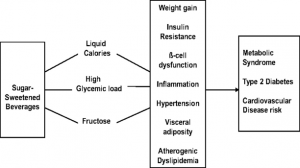By: Juliana Gullotta and Laura Sturgill
If you’ve participated in any athletic event, you know that one of the first things you do is to start stretching before any activity takes place. Coaches and trainers emphasize that stretching should occur on a regular basic, and become part of an individual’s workout routine. These stretches are usually static stretches (holding a stretch for 20-30 seconds). The intent of prescribing stretching before exercise, is based on the assumption that by stretching you enhance performance, prevent injuries, and increase flexibility. However, several studies, including one from the Journal of Applied Physiology, Nutrition, and Metabolism, have shown that stretching before exercise can actually do more harm than good, and increase your risk of injury.

Results from study Conducted by the University of Nevada comparing the effects of static, ballistic, and no stretching (control) on muscle power. Asterisk signifies statistically significant.
While stretching before exercise does activate the muscles and increase blood flow to the areas as a “warm up”, it can be potentially very detrimental to an athlete’s workout. This conclusion is especially pertinent when the sport in question requires maximal force production. In a study conducted at the University of Nevada, researchers determined that leg muscles generate less force after static stretching than if they did not stretch at all. When muscles are subject to the strain of static stretching, they remain in a weakened state, thereby temporarily reducing the force that it can produce. The researchers evaluated two types of stretching, ballistic (bouncing) and static (control is no stretching). After stretching for 3 sets of 30 seconds, subjects performed a vertical jump on a force plate. Power values were compared for each of the conditions (Figure 1). From this graph it is clear to see a significant difference in the power values observed in the control group and static group. The decrease in power after stretching could inhibit a good muscle building workout. For sports that require maximum power (ex. football), static stretching should be limited before activity.
Static stretching intervals should last for no more than 60 seconds, or moderate reduction in maximal muscle performance may be observed. In a study conducted by Behm et. al. the effects of static stretching on power-speed and strength tasks were compared. One of the main components of this study involved investigating the relationship between time spent holding a stretch and subsequent performance in a physical activity. In order to perform these tests, two groups of healthy and active adults were randomly assigned, with one group holding their static stretch for less than 60 seconds and the other for a period of time greater than 60 seconds. On average there was a mean reduction of muscle performance for both test groups, but the group that held the stretch for a longer period of time experienced significantly higher reduction rates in performance. For the individuals that held the stretch for less than 60 seconds, a mean reduction of 1.1% was observed and categorized by the researchers as a small reduction in performance. However, a moderate reduction of 4.6% was noted in the population that held the stretch for longer than 60 seconds, indicating that there is a dose-response relationship between stretching and maximal muscle performance.
To investigate this relationship further, two types of physical activity were studied. Power-speed tasks were given to both groups and the results supported the notion that on average static stretching, especially when held at higher intervals, impaired muscle performance in the test subjects. While only a small mean reduction rate of 1.3% was observed for this type of exercise, this change could be extremely detrimental to an athlete’s performance where maximal speed is critical (i.e. sprinters). Power tasks were also completed, and the negative effects of static stretching on performance became more apparent. On average there was a 4.6% reduction in an individual’s maximum muscle performance, with a higher instance of 5.1% reduction when the activities were completed after a period of stretching lasting longer than 60 seconds. In another study also conducted by Behm et. al, these findings were not only supported by additional trials, but also expanded upon to look at the long term effects of stretching on overall performance. In his initial study that looked at power and speed tasks, maximal muscle performance was calculated minutes after the the stretching was complete. The second study, however, observed the prolonged effects that static stretching would have on an athlete, and concluded that even 2 hours after the last set of static stretching, instances of decreased performance existed.
The results from these studies suggest that time spent holding a stretch and subsequent muscle performance have an inverse relationship. For this reason more and more coaches and athletes are looking to implement a different approach to their warm up routine.

Straight leg march can be used as a dynamic stretch alternative to the static sit-and-reach stretch. Courtesy of the New York Times
Dynamic stretching (Figure 2) is simply the act of stretching your muscles while moving, and it is an effective method to get your blood flowing and increase your power, flexibility, and range of motion prior to working out. This type of stretching is unique in that the activities performed have the ability to target specific muscles necessary for the task at hand. In other words, different forms of dynamic stretching would be used for a sprinter and a volleyball player because each sport requires a different amount and variety of muscle activity. Dynamic stretching allows athletes to engage their bodies’ muscles in a way that static stretching cannot, thereby quickly earning its place as a replacement to static stretching in many pre-workout routines.
While the value of traditional static stretching before exercise may be an outdated concept, the benefit of increased flexibility in athletes should not be ignored. For this reason post workout stretching is recommended as a “cool down”. If necessary, short duration, lasting less than 30 seconds, low intensity static stretches could be implemented before activity to get blood flowing to muscles and reduce stiffness, but this does not offer the best possible results. The ideal warm-up routine for athletes to minimize risk of injury and maximize performance should include aerobic activity, dynamic stretching, and sport specific dynamic exercises.
Questions to consider:
How would the stretching routine you made for football players differ from that of a sprinter?
There is a lot of information about how bad form or technique during exercise can cause injury, should there be attention called to the potential adverse effects of stretching improperly?
References
Samuel, M. N., Holcomb, W. R., Guadagnoli, M. A., Rubley, M. D., & Wallmann, H. (January 01, 2008). Acute effects of static and ballistic stretching on measures of strength and power. Journal of Strength and Conditioning Research, 22, 5, 1422-8.
Behm, D. G., Blazevich, A. J., Kay, A. D., & McHugh, M. (January 01, 2016). Acute effects of muscle stretching on physical performance, range of motion, and injury incidence in healthy active individuals: a systematic review. Applied Physiology, Nutrition, and Metabolism =, 41, 1, 1-11.
Shrier, I. (October 01, 1999). Stretching Before Exercise Does Not Reduce the Risk of Local Muscle Injury. Clinical Journal of Sport Medicine, 9, 4, 221-227.
Behm, D. G., & Chaouachi, A. (November 01, 2011). A review of the acute effects of static and dynamic stretching on performance. European Journal of Applied Physiology, 111, 11, 2633-2651.
Shrier, I. (January 01, 2000). Stretching before exercise: an evidence based approach. British Journal of Sports Medicine, 34, 5, 324-325.
Herbert, R. D., & Gabriel, M. (January 01, 2002). Effects of stretching before and after exercising on muscle soreness and risk of injury: systematic review. Bmj (clinical Research Ed.), 325, 7362.)
Reynolds, Gretchen. (2008) Stretching: The Truth. The New York Times. Retrieved from: http://www.nytimes.com/2008/11/02/sports/playmagazine/112pewarm.html
Reynolds, Gretchen. (2016) The Right Way to Stretch. The New York Times. Retrieved from: https://well.blogs.nytimes.com/2016/01/21/stretching-back-to-the-past/




